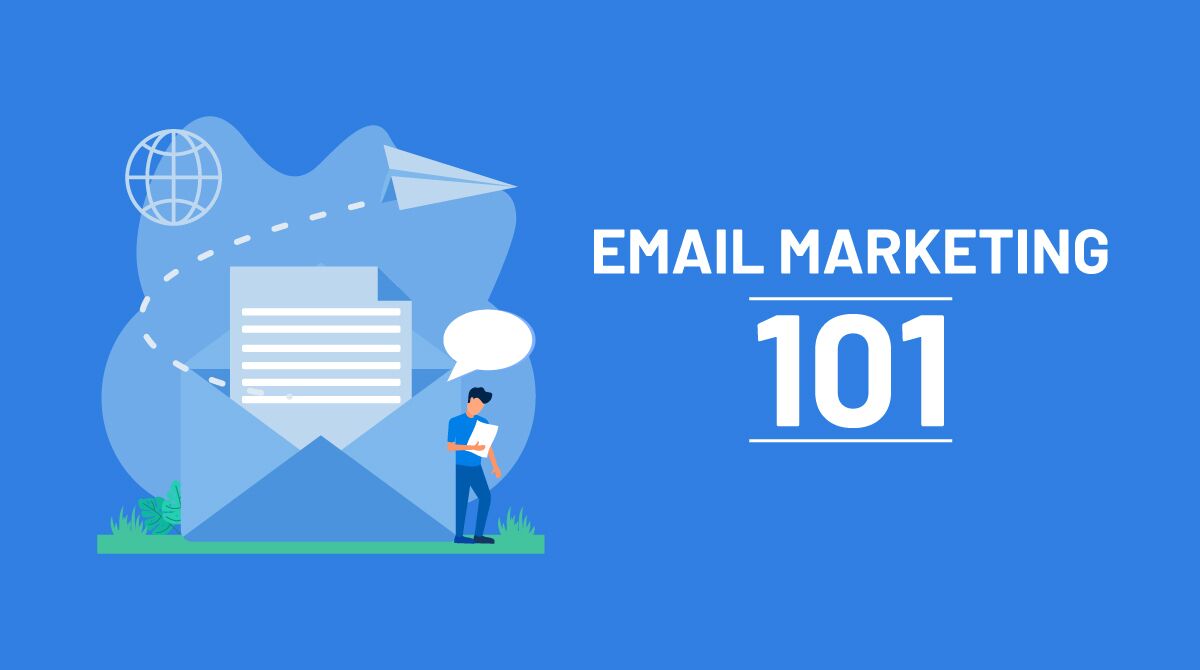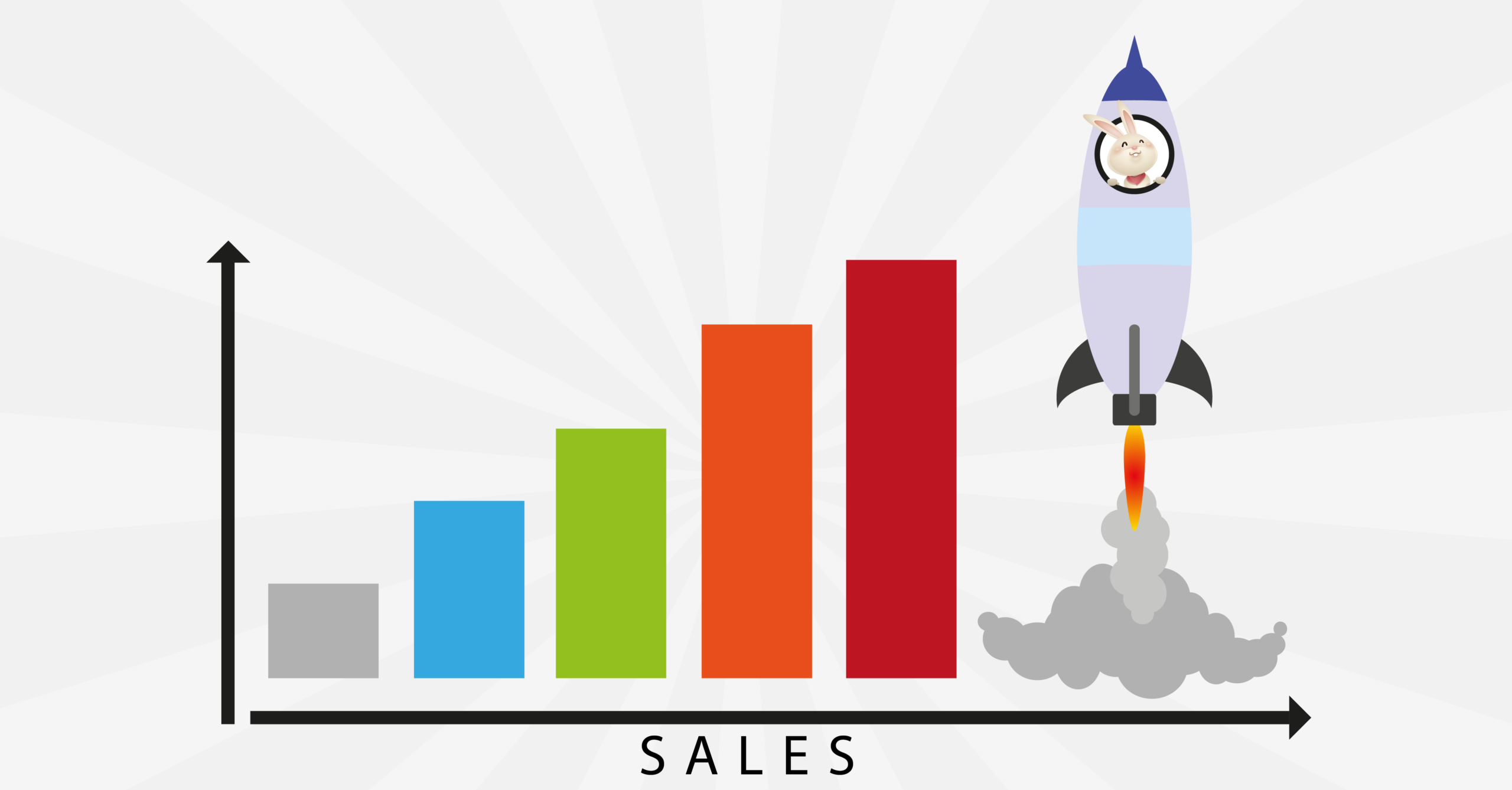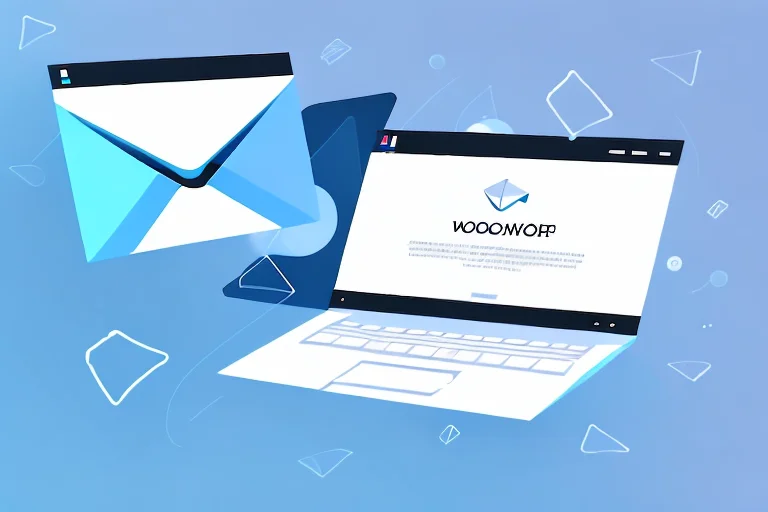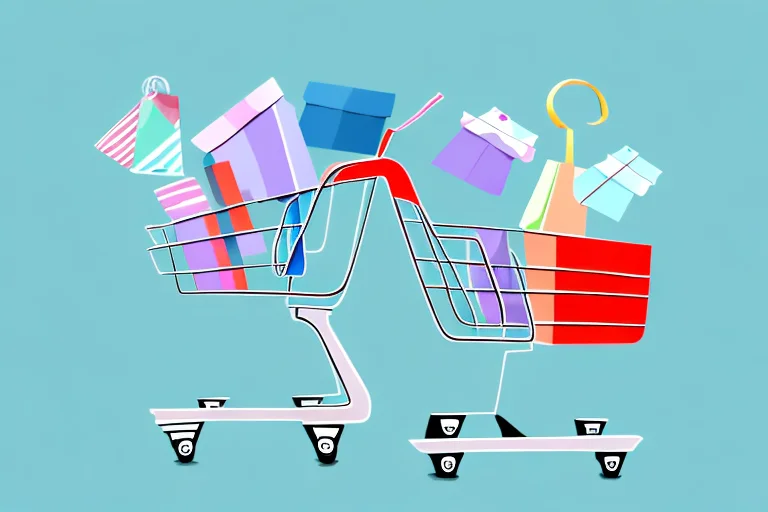Email marketing has emerged as one of the most powerful tools for e-commerce businesses, and WooCommerce store owners can greatly benefit from its effectiveness. In this article, we will delve into the world of email marketing and explore how it can supercharge your WooCommerce store. From understanding the power of email marketing to setting up a strategic approach, integrating it with your WooCommerce store, measuring its success, and exploring successful case studies, we will cover it all. So, let’s get started and unlock the potential of email marketing for your WooCommerce store.
Understanding the Power of Email Marketing
Email marketing plays a crucial role in driving success for your WooCommerce store. It is an effective way to nurture your customer relationships, build trust, and encourage repeat purchases. With email marketing, you can deliver personalized and targeted content to your subscribers, providing them with valuable information, promotions, and updates about your store. By staying top of mind, you can increase customer engagement and ultimately boost conversions and sales.
But what exactly makes email marketing so powerful? Let’s dive deeper into the benefits it brings to your WooCommerce store.
Firstly, email marketing allows you to establish a direct line of communication with your customers. Unlike social media or other advertising channels, email provides a more personal and intimate way to connect with your audience. By sending emails directly to their inbox, you have a higher chance of capturing their attention and driving them back to your store.
Secondly, email marketing enables you to deliver targeted content to your subscribers. By segmenting your email list based on various factors such as demographics, purchase history, or browsing behavior, you can tailor your messages to specific customer groups. This personalization creates a more relevant and engaging experience, increasing the likelihood of conversions.
Furthermore, email marketing allows you to automate your communication. With the help of email marketing platforms, you can set up automated email campaigns triggered by specific actions or events. For example, you can send a welcome email to new subscribers, follow up with abandoned cart reminders, or send personalized recommendations based on past purchases. This automation saves you time and effort while ensuring consistent and timely communication with your customers.
Why Email Marketing is Crucial for Your WooCommerce Store
In the highly competitive world of e-commerce, email marketing can be the differentiating factor that propels your WooCommerce store to success. It allows you to establish a direct line of communication with your customers, providing them with an enhanced shopping experience. By leveraging email marketing, you can attract new customers, retain existing ones, recover abandoned carts, and maximize customer lifetime value. It serves as a powerful tool for driving customer engagement, increasing brand loyalty, and ultimately growing your WooCommerce store.
Let’s explore some additional reasons why email marketing is crucial for your WooCommerce store:
Firstly, email marketing is cost-effective. Compared to other marketing channels such as paid advertising or influencer partnerships, email marketing offers a high return on investment. With a well-crafted email campaign, you can reach a large number of customers without breaking the bank.
Secondly, email marketing allows you to track and measure your results. Most email marketing platforms provide robust analytics and reporting features, allowing you to monitor the performance of your campaigns. You can track metrics such as open rates, click-through rates, and conversion rates to understand how your emails are resonating with your audience and make data-driven improvements.
Moreover, email marketing helps you build brand loyalty and trust. By consistently delivering valuable content and personalized offers, you can strengthen the bond between your brand and your customers. When customers feel appreciated and understood, they are more likely to become loyal advocates for your WooCommerce store, spreading positive word-of-mouth and driving new business.
In conclusion, email marketing is a powerful tool that can significantly impact the success of your WooCommerce store. By utilizing its capabilities to nurture customer relationships, deliver targeted content, and automate your communication, you can drive engagement, increase conversions, and grow your business. Don’t miss out on the opportunities that email marketing brings – start leveraging its power today!
Setting Up Your Email Marketing Strategy
When it comes to setting up an effective email marketing strategy for your WooCommerce store, there are several important factors to consider. One of the most crucial aspects is choosing the right email marketing platform. This decision can greatly impact the success of your campaigns.
Choosing the Right Email Marketing Platform
When selecting an email marketing platform, it is essential to look for one that offers robust features. Automation, segmentation, and analytics are some of the key features to consider. Automation allows you to streamline your email campaigns by setting up automated workflows, saving you time and effort. Segmentation enables you to divide your email list into different groups based on factors such as customer behavior, demographics, and purchase history. This allows you to send targeted content to specific customer segments, resulting in higher engagement and conversion rates. Analytics provide valuable insights into the performance of your email campaigns, allowing you to make data-driven decisions and optimize your strategy.
Another important aspect to consider when choosing an email marketing platform is its integration capabilities with WooCommerce. Seamless synchronization of customer data and purchase information between your online store and email marketing platform is crucial for delivering personalized and relevant content to your subscribers.
Segmenting Your Email List for Better Results
Segmentation is a key aspect of a successful email marketing strategy. By segmenting your email list, you can tailor your content to specific customer segments, increasing the effectiveness of your campaigns. There are various ways to segment your list, such as by customer behavior, demographics, and purchase history.
Segmenting based on customer behavior allows you to send targeted emails to customers who have shown a specific interest or taken a particular action on your website. For example, if a customer has abandoned their shopping cart, you can send them a personalized email with a reminder and an enticing offer to encourage them to complete their purchase.
Demographic segmentation involves dividing your email list based on factors such as age, gender, location, or any other relevant demographic information. This allows you to create content that resonates with specific demographics, increasing the likelihood of engagement and conversion.
Segmenting based on purchase history enables you to send tailored emails to customers who have made a purchase in the past. You can use this opportunity to upsell or cross-sell related products, provide personalized recommendations, or offer exclusive discounts as a token of appreciation for their loyalty.
Crafting Effective Email Content
The content of your emails plays a crucial role in capturing the attention of your subscribers and driving desired actions. It is important to keep your emails concise, engaging, and personalized.
Start by creating compelling subject lines that entice your subscribers to open your emails. A well-crafted subject line can make a significant difference in the open rates of your campaigns. Experiment with different approaches, such as posing a question, creating a sense of urgency, or offering an exclusive benefit.
In addition to captivating subject lines, use visually appealing elements in your emails to grab the attention of your subscribers. Incorporate eye-catching visuals, such as product images or infographics, to make your content more visually appealing and memorable.
Personalization is another key element of effective email content. Address your subscribers by their names and tailor the content to their specific interests or preferences whenever possible. This level of personalization makes your subscribers feel valued and increases the chances of them engaging with your emails.
Experiment with different content formats to keep your email campaigns diverse and engaging. Product showcases can highlight new arrivals or popular items, while customer testimonials can build trust and credibility. Informative newsletters can provide valuable content related to your industry or niche, positioning your brand as a trusted source of information.
Lastly, don’t forget to include compelling calls-to-action in your emails. Clearly state what action you want your subscribers to take, whether it’s making a purchase, signing up for a webinar, or downloading a free resource. Make sure your calls-to-action are prominently displayed and easily clickable.
By following these tips and crafting effective email content, you can maximize the impact of your email marketing strategy and drive better results for your WooCommerce store.
Integrating Email Marketing with WooCommerce
WooCommerce, the popular e-commerce platform, offers a wide range of plugins that can seamlessly integrate email marketing into your store. These plugins provide features such as email opt-in forms, automated email workflows, and advanced email analytics. By utilizing these plugins, you can streamline your email marketing efforts and enhance the overall effectiveness of your campaigns.
Email marketing has become an essential tool for businesses to engage with their customers and drive sales. With WooCommerce’s plugins, you can easily capture email addresses through opt-in forms placed strategically on your website. These forms can be customized to match your store’s branding and design, ensuring a seamless user experience.
Once you have collected email addresses, WooCommerce’s plugins enable you to create automated email workflows. Automation is a game-changer in email marketing. It allows you to send personalized and timely emails to your customers based on their actions and behaviors. For example, you can set up a welcome email series for new subscribers, sending them a series of emails introducing your brand and offering exclusive discounts.
Using WooCommerce Plugins for Email Marketing
One of the key features offered by WooCommerce’s plugins is the ability to create advanced email campaigns. These campaigns can be tailored to specific customer segments, ensuring that your messages resonate with your target audience. By segmenting your email list based on factors such as purchase history, browsing behavior, and demographics, you can deliver highly relevant content that drives engagement and conversions.
Another powerful feature of WooCommerce’s plugins is the ability to track and analyze the performance of your email campaigns. With advanced email analytics, you can gain valuable insights into metrics such as open rates, click-through rates, and conversion rates. This data allows you to fine-tune your email marketing strategy, optimizing it for maximum impact.
Furthermore, WooCommerce’s plugins enable you to integrate your email marketing efforts with other marketing channels. For example, you can sync your email list with your social media accounts, allowing you to reach your customers through multiple touchpoints. This integrated approach helps you create a cohesive and consistent brand experience for your customers.
Automating Email Campaigns with WooCommerce
Automation is a powerful tool that can revolutionize your email marketing efforts. With WooCommerce, you can automate various email campaigns, saving you time and effort. One of the most popular automated campaigns is the abandoned cart reminder. When a customer adds items to their cart but fails to complete the purchase, an automated email can be triggered, reminding them to complete their order.
Post-purchase follow-up emails are another effective way to engage with your customers. By sending a series of emails after a customer makes a purchase, you can thank them for their business, request a review, and offer personalized recommendations based on their purchase history. These emails not only strengthen customer loyalty but also drive repeat purchases.
In addition to abandoned cart reminders and post-purchase follow-ups, WooCommerce’s plugins allow you to create re-engagement campaigns. These campaigns target customers who have been inactive for a certain period, enticing them to return to your store with exclusive offers or personalized recommendations. By re-engaging dormant customers, you can rekindle their interest and drive additional sales.
In conclusion, integrating email marketing with WooCommerce can significantly enhance the effectiveness of your marketing campaigns. With WooCommerce’s plugins, you can capture email addresses, create automated email workflows, and analyze the performance of your campaigns. By leveraging these features, you can deliver personalized and timely content to your customers, driving engagement, and boosting sales.
Measuring the Success of Your Email Marketing Campaigns
Key Email Marketing Metrics to Track
Measuring the success of your email marketing campaigns is essential for optimization and improvement. In today’s digital landscape, email marketing has become a powerful tool for businesses to connect with their audience and drive conversions. As an email marketer, it’s crucial to track key metrics to gauge the effectiveness of your campaigns.
One of the most important metrics to monitor is the open rate. This metric indicates the percentage of recipients who opened your email. A high open rate suggests that your subject line and pre-header text were compelling enough to grab the attention of your subscribers. On the other hand, a low open rate might indicate that your subject line needs improvement or that your email is not reaching the right audience.
Another vital metric to track is the click-through rate (CTR). This metric measures the percentage of recipients who clicked on a link within your email. A high CTR signifies that your email content was engaging and persuasive, leading subscribers to take action. Conversely, a low CTR may indicate that your email lacked compelling content or that your call-to-action was not clear enough.
Conversion rate is yet another crucial metric to consider. This metric measures the percentage of recipients who completed a desired action, such as making a purchase or filling out a form, after clicking on a link in your email. A high conversion rate indicates that your email marketing efforts are driving tangible results and generating revenue for your business.
Lastly, tracking the revenue generated from your email campaigns is essential. This metric provides a clear picture of the financial impact of your email marketing efforts. By monitoring the revenue generated, you can identify the most successful campaigns and replicate their strategies in future campaigns.
Analyzing and Improving Your Email Marketing Performance
Once you have gathered data on your email marketing campaigns, it’s crucial to analyze the results and make improvements where necessary. Analyzing your email marketing performance allows you to gain valuable insights into the effectiveness of your strategies and identify areas for optimization.
Start by identifying trends and patterns in your data. Look for commonalities among your most successful campaigns. Are there specific subject lines or email layouts that consistently perform well? By recognizing these patterns, you can replicate successful strategies in future campaigns and increase your chances of success.
It’s also important to identify areas of failure. Analyze campaigns with low open rates, click-through rates, or conversion rates. Is there a common factor among these campaigns? Perhaps the subject lines were not compelling enough, or the email content failed to resonate with your audience. By pinpointing the areas that need improvement, you can make targeted changes to enhance your overall email marketing performance.
Testing different elements of your email campaigns is another effective way to optimize your email content. Experiment with different subject lines, email layouts, and call-to-action buttons to see which variations yield the best results. A/B testing allows you to compare the performance of different elements and make data-driven decisions to improve your email marketing strategy.
Remember, email marketing is not a one-size-fits-all approach. What works for one business may not work for another. Continuously analyzing your email marketing performance and making data-driven improvements is crucial for staying ahead of the competition and maximizing the success of your campaigns.
In conclusion, email marketing has become a game-changer for WooCommerce stores. It enables direct communication with customers, drives engagement, and boosts sales. By understanding the power of email marketing, setting up a comprehensive strategy, integrating it with your WooCommerce store, and measuring its success, you can supercharge your WooCommerce store and take it to new heights. Learn from successful case studies, and leverage the potential of email marketing to elevate your WooCommerce store’s performance. Start harnessing the power of email marketing today and watch your WooCommerce store thrive.
Ryzeo – A Leader in E-Commerce Email Marketing
Ryzeo, a leading B2B ecommerce email agency, consistently propels businesses to extraordinary growth by adding an additional $40k to $100k per month in revenue through our tailored, data-driven email marketing campaigns. Our customers witness a remarkable average sales growth of 16%, with some experiencing a surge of more than 30%. This measurable success can be attributed to our effective, 8-step methodology:
- Gathering emails
- Creating user profiles
- Implementing email marketing automation
- Developing a product feed
- Setting up a personalization system
- Incorporating product recommendations into emails and on websites
- Generating an insightful email newsletter
- Crafting targeted campaigns such as welcome series, product view, cart abandonment, and post-purchase upsell emails
We kickstart this process by collecting emails, laying the groundwork for a robust database. This information helps us in creating user profiles, offering invaluable insights into customer behavior. With our sophisticated email marketing automation, we deliver tailored messages at just the right moment, effectively guiding the customer journey. Our unique product feed creation and personalization system allow us to align product recommendations with individual customer preferences, driving increased engagement and sales. Finally, we maintain regular communication through value-adding newsletters that keep our clients’ brands at the top of their customers’ minds.
Connect with Ryzeo today and let our results-driven strategies significantly elevate your sales and enhance your brand’s resonance. Begin your transformative journey with Ryzeo by visiting our website ryzeo.com and scheduling your free strategy session. With Ryzeo, your business can rise to new heights of success.
Schedule Your Free Strategy Session – Book a Demo
Contact Ryzeo today and start seeing results! Visit us at ryzeo.com.








